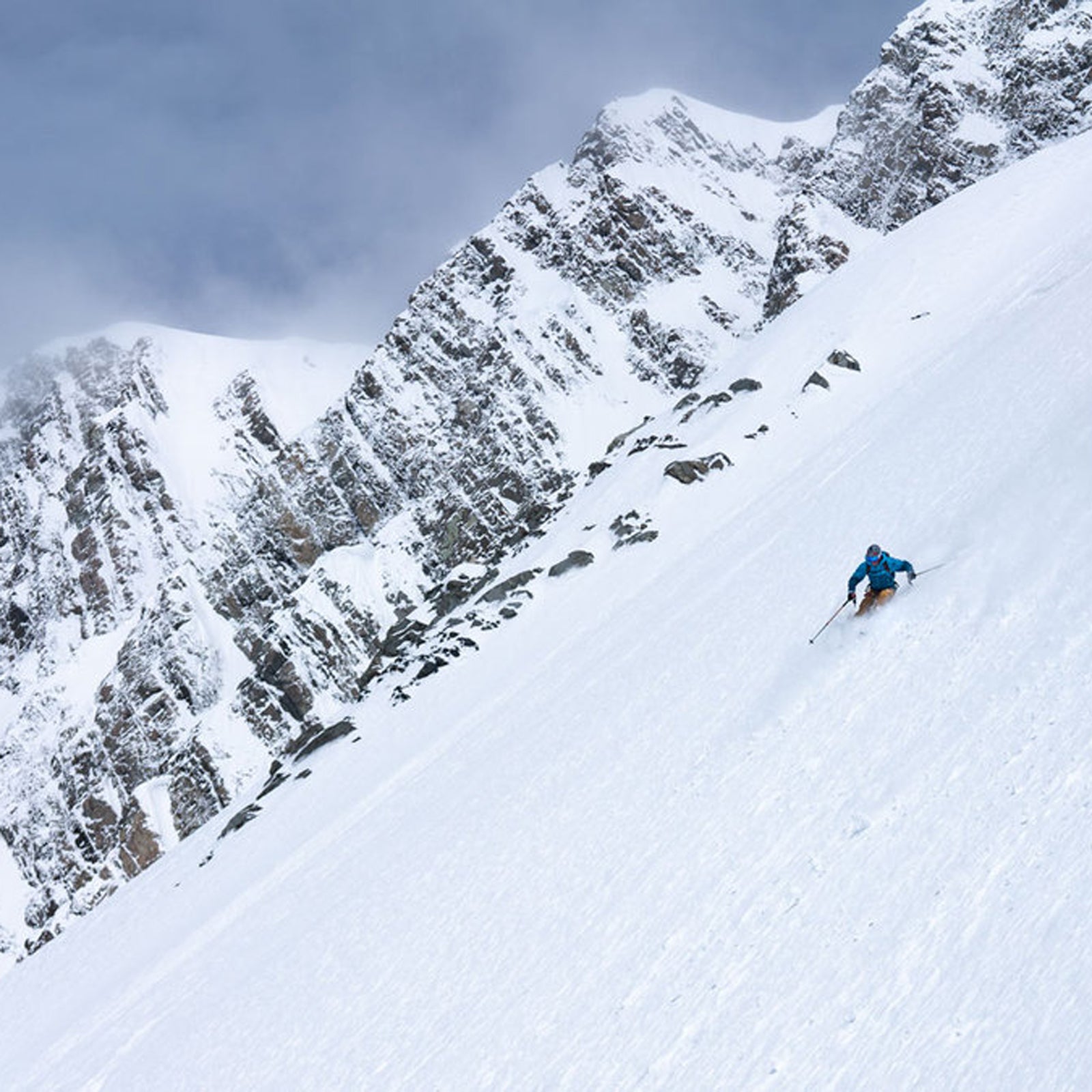I was 23 when I started backcountry skiing. IŌĆÖd been recreating in the mountains my entire life, resort skiing, backpacking, and climbing volcanoes in the Cascades. IŌĆÖd taken a National Outdoor Leadership School┬Āmountaineering course,┬Āand I was writing for a ski magazine. And yet I felt completely lost about where to start. So I borrowed some gear and took an American Institute for Avalanche Research and Education (AIARE) Level 1 course, which┬Āat the time┬Āseemed like the only way to begin.┬Ā
┤Ī▒§┤ĪĖķĘĪŌĆÖs╠²│┘│¾░∙▒▒-╗Õ▓╣▓Ō ┬Ācomprises 24 hours of education, usually about eight hours of classroom learning followed by two eight-hour field days, and offers a crash course in snow safety, avalanche terrain, and companion rescue. It has long been the standard entry point for backcountry beginners.┬Ā
ŌĆ£The memo is out,ŌĆØ says Scott Schell, executive director of the Northwest Avalanche Center. ŌĆ£If youŌĆÖre the random newbie at REI digging around for a touring binding, somehow you also understand that you should take a Level 1. ItŌĆÖs remarkable that thatŌĆÖs such a strong message.ŌĆØ┬Ā
But, Schell points out, there might be better places to begin your backcountry ski career than a field course.┬Ā
In the past decade, more brands, nonprofits, and other backcountry-ski-adjacent groups have worked to make . ItŌĆÖs always been piecemeal, though. Then, early this winter, International Federation┬Āof Mountain Guides AssociationsŌĆōcertified Exum mountain guide launched ŌĆ£A Comprehensive Guide to Avalanche Safety,ŌĆØ a course available on his website , for $249. Smiley estimates that it takes about seven or eight hours to complete. I was curious how an online education might stack up against the traditional AIARE┬Ācourse, so I signed up.
ŌĆ£The person that I made this course for is essentially my 24-year-old self,ŌĆØ Smiley says. ŌĆ£I was like, ŌĆśHey, I wanna go backcountry skiing, IŌĆÖm super psyched, I ╗Õ┤Ū▓įŌĆÖt want to freakinŌĆÖ die.ŌĆÖ You canŌĆÖt remove all risk, of course. But I want to make the knowns more knowable, and knowable in an organized fashion.ŌĆØ
Smiley is passionate about teaching; Mountain Sense is also home to online courses on mountaineering, rappelling, crevasse rescue, anchor building, and more. Each course, including the one that tackles┬Āavalanche safety, is grounded in his own experience, but heŌĆÖs still ŌĆ£standing on the shoulders of giants,ŌĆØ as he puts it. Smiley┬Āhas tons of education under his belt, including courses with AIARE, the American Avalanche Institute, and various guiding companies and certification boards. His program pulls from decades of research and features a colorful cast of experts, including Exum guide and professional skier , who share their knowledge, too.
Once you purchase the course, you┬Āhave permanent access to the materials. ItŌĆÖs broken into seven sections, each centered around a pillar of backcountry skiing, including┬Āthe ┬ĀyouŌĆÖll encounter, how to be a responsible┬Āski partner, and how to dig┬Āsnow pits. It covers similar ground as the classroom portion of AIAREŌĆÖs┬Ārecreational Level 1. Critically, thereŌĆÖs no field component, so you wonŌĆÖt learn as much about companion rescueŌĆöthatŌĆÖs something better taught in person. But you will learn how a prolific backcountry skier evaluates the weather and snowpack before a ski day, what professionals in the field took away from their near misses, and which communication tactics make for safe and fun backcountry teams. Throughout it all, Smiley is engaging, funny, and direct, making complicated concepts easily digestible. HeŌĆÖs as interested in what happens above the snowŌĆölike scoring great conditionsŌĆöas he is in the science beneath the surface. Quizzes, links to outside resources, and small written sections punctuate short videos, which make up the bulk of the material. An evaluation at the end measures your retention rate, a helpful step that is not included in a Level 1.
I took SmileyŌĆÖs course over the first couple months of this ski season┬Āand came away from it thinking that it may be a better launchpad for some beginners than the AIARE Level 1. (It was also a worthwhile refresher for┬Āme, an intermediate backcountry skier five years out from┬Āmy first avy course.)┬Ā
The trouble with a Level 1┬ĀisnŌĆÖt the curriculum or the format, itŌĆÖs just that it might not be the best first step. ŌĆ£ThereŌĆÖs a lot that could be done ahead of time on the studentŌĆÖs own time and pace that would set people up to get a lot more out of a conventional Level 1,ŌĆØ says Schell. ŌĆ£Students today lack fundamental skills that people 20 or 30 years ago had when they came to an introductory avalanche course. The number of people showing up on the morning of their field day that have their skins in their box is just remarkable.ŌĆØ
Already possessing┬Āskills like how to read┬Āa topo map, layer┬Āappropriately, pack┬Āthe essentials, use your gear, and ski-tour┬Āefficiently will all help you get more out of your time in the course. ŌĆ£Just imagine someone who is completely spent learning how to do , this kind of complicated yogic move, and now you expect them to absorb how to read avalanche terrain? ItŌĆÖs a tall order,ŌĆØ says Schell.
ThereŌĆÖs nothing wrong with being a beginner, and thereŌĆÖs nothing wrong with showing up to an educational course as a total newbie. But these are the people who SmileyŌĆÖs course could really serve.┬ĀA good avalanche course will show you just how much you ╗Õ┤Ū▓įŌĆÖt know┬Āand where your learning should go. SmileyŌĆÖs accomplishes this with both snow safety and more general ski touring. He demystifies a cryptic sport so that you understand┬Āwhere to begin. Afterward┬ĀyouŌĆÖll be better equipped to┬Āconfidently make your own gear purchases, pack a backpack for a day in the backcountry,┬Āand get┬Āout for low-consequence shakedown tours. You can start to┬Ālearn the basics safely on your own┬Ābefore you spring for an in-person, in-the-field course, which typically costs between $500 and $700.
There are limitations to online learning, of course. , an avalanche-education instructor for the American Avalanche Institute and an American Mountain Guides AssociationŌĆōcertified ski guide, points out that field time is absolutely essential. ŌĆ£Reading the mountains, understanding changing conditions, and understanding hazards in terms of avalanches is all sensory. That feeling element is actually the most important part,ŌĆØ she says. Online courses like SmileyŌĆÖs tap into the cerebral side of learning, but they ╗Õ┤Ū▓įŌĆÖt offer the same on-the-ground, sensory input that field days do.┬Ā
Baker points out another possible hiccup with online learning. Her in-person courses have replaced the┬Āclassroom component with an online curriculum this year, due to the pandemic, and sheŌĆÖs┬Ānoticed that on the first field day, the number of┬Āstudents who┬Āactually come having┬Ācompleted their online coursework is reliably slim to none. ŌĆ£While IŌĆÖm sure there are people out there who are responsible with how they approach an online course, I think a lot of people just tend to skip over things,ŌĆØ she says. ŌĆ£Ultimately, life-or-death decisions are being made from this information. ThatŌĆÖs when we need to ask: Is an online course sufficient? Is that going to give somebody the tools they need?ŌĆØ
SmileyŌĆÖs course puts the onus on the student to be a self-motivated learner, get out into the field, and practice. And realistically, a Level 1┬Āshould do the same. There is a limit to all avy education. Backcountry skiing isnŌĆÖt something you can learn in a weekend. The only way to build skills, experience, and confidence is to frequent┬Āthat terrain┬Āoften┬Āand over a long period of time.┬Ā
ŌĆ£I have always joked that I think a Level 1┬Āought to be 40┬Āfield days,ŌĆØ Schell says. ŌĆ£You take a month and a half off, and thatŌĆÖs your Level 1. ItŌĆÖs just hard to get much out of a three-day class.ŌĆØ
Offerings like SmileyŌĆÖs make it possible, in a way, to take a 40-day Level 1. You can move through it at your own pace, and heŌĆÖs available to answer questions and offer counsel throughout the season. If you ╗Õ┤Ū▓įŌĆÖt understand a pit you dug, heŌĆÖs there as a resourceŌĆöhis students can email him or add comments to the learning module and heŌĆÖll respond within a day or two. After a tour, you can easily access and rewatch a video that explains what whumpfing sounds like. Or you can check out your local forecast, revisit the sections that explain how to read it, and then make your plan.
In school, some students learn best from books and others from lectures, some by watching and others by doing. The best thing teachers can offer their pupils is options┬Āand a chance to steer their learning in the direction that best suits them. SmileyŌĆÖs course is a welcome addition to an educational field that lacks variety. It doesnŌĆÖt completely replace a Level 1, and his students should still seek out field time with experienced mentors, guides, or instructorsŌĆöand Smiley is happy to connect his students with a local-to-them guide or educator when theyŌĆÖre ready.
While you canŌĆÖt learn to travel safely in the backcountry simply by staring at a computer screen, it can be a useful place to start, or continue, your education.┬Ā


